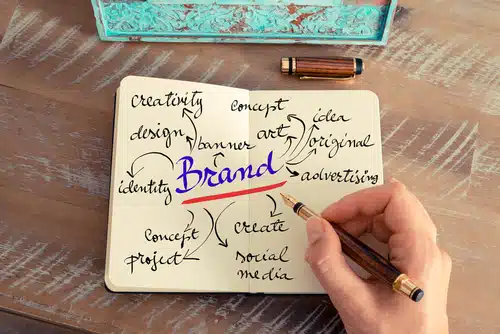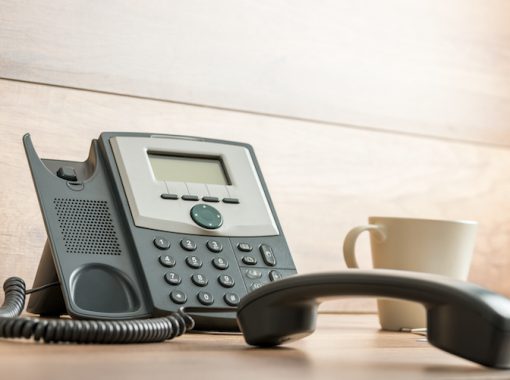
When building a brand, nothing is more challenging than making it stand out in a noisy, saturated market. With over 4.4 million businesses starting every year, it’s critical for businesses to create a memorable, unique brand that connects emotionally with its ideal customers. There are many elements of branding, from colors and fonts to website copy, and it only takes 50 milliseconds for someone to develop a brand perception.
In this post, we’ll cover:
Table of Contents
- What is brand perception?
- What makes a distinct, memorable brand
- Best practices in brand distinctiveness
- Examples of top brands of brand distinctiveness
How can brands distinguish themselves from competitors? How can you build brand recognition? How should you go about establishing a unique brand identity that is instantly recognizable?
What is Brand Perception?
Brand perception is what consumers think, feel, and experience about a product or service. The old adage “perception is reality” rings true when it comes to brand perception, as it’s about what people think the brand is, not necessarily what the brand wants to be known for. Brand perception is more than an opinion; it’s often even a subconscious feeling people have toward your brand.
For example, a trendy new restaurant might be perceived as “snobby” to some and “exclusive” to others due to its long reservation waitlist. A vintage antique business might be perceived as “quaint” by some but “junk” by others. Many things contribute to brand perception, like word-of-mouth, marketing, paid advertising, brand attributes like colors and names, and even customer service experiences.
What Makes a Distinct, Memorable Brand
So, what exactly makes a distinct, memorable brand? How do companies like Nike, Disney, Coca-Cola, or Toyota cement themselves so firmly in our minds? Distinctive brand assets can be a logo, tagline, color, fonts, shapes of the product, or audible sounds like the song from State Farm commercials. Creating distinctive key elements, you’ll use over and over again helps build a familiar element your audience and customers will hear or see on repeat. Familiarity breeds positivity and 82% of people will simply choose a brand because it feels familiar.
Best Practices in Brand Distinctiveness
1. Don’t be afraid of repetition.
You might think you’re overusing your brand’s identity, but it helps to emphasize key assets like your logo, fonts, or tagline again and again. People need to see something seven times before they remember it, and frequency is the key to making marketing effective.
2. Focus on building trust.
When people feel more familiar with your brand, they trust you more, and trust is a key factor in a consumer’s purchasing decision. 46% of people would pay more to buy from a brand they trust.
3. Consider how you can be different from competitors.
When dealing with direct competition, it’s helpful to think about how you can stand out. If a competition focuses on the lowest price, can you brand your business as higher quality? If a competitor is known for a poor customer experience, can you highlight your expert support on your website? Building a memorable brand involves not looking exactly like your competitor.
Examples of Top Brands of Brand Distinctiveness
The Nike “Swish” logo
Perhaps one of the most popular examples of a distinct brand asset, the Nike “swish” logo is known around the world. 62% of the world’s shoe market belongs to Nike, thanks to its memorable branding.
The McDonald’s Golden Arches
Travel around the world, and undoubtedly, you’ll recognize McDonald’s Golden Arches. As the world’s 9th most valuable brand, sitting at a valuation of $106.4 billion, McDonald’s is known as one of the largest fast food joints in the world.
Disney Castles
Show a picture of Cinderella’s Castle, and most people can easily identify that as Disney. Disney uses very specific branding and repetition to create their ideal brand perception – innovative, family-friendly, and magical. Disney’s brand is also the 5th most valuable in the world.
The Apple Logo
Another simple but highly memorable icon is the Apple logo. Most people don’t even need to see the word “Apple” attached to the icon and remember it on its own. Distinctive assets like this trigger recall; similarly, many people can identify an Apple smartphone or laptop based on its design alone. Apple is known for its sleek, slim, and futuristic-looking products.
The Coca-Cola Bottle
The iconic Coca-Cola bottle shape is a distinctive brand asset and hasn’t changed much from the original design launched in the early 1900s. Even as the company has pushed marketing campaigns with new beverages like Coke Zero or Diet Coke, the bottle shape is immediately identifiable by consumers, showing how brands benefit from decades of repetition.
Use These Tips for Improving Brand Perception
In a distraction-filled world, it’s easy for a brand to get lumped into everyone else. Start using these tips today to improve brand perception, create a memorable experience for your customers, and stand out in a crowded market.
Embrace repetition, and don’t be afraid to take a different stance than competitors. Analyzing top brands like Coca-Cola, Disney, Apple, and Nike provide great examples of what makes a memorable brand and how to continually improve brand perception in the hearts and minds of your customers.












